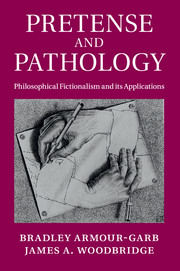Book contents
- Pretense and Pathology
- Pretense and Pathology
- Copyright page
- Dedication
- Contents
- Preface
- 1 Philosophical fictionalism
- 2 Semantic pretense-involving fictionalism and existence-talk
- 3 Propositional realism and a SPIF account of proposition-talk
- 4 T-deflationism and a SPIF account of truth-talk
- 5 Diagnosing and treating the Liar Paradox and other apparent alethic pathologies
- 6 SPIF accounts of reference-talk and predicate-satisfaction-talk and apparent non-alethic semantic pathology
- 7 Extensions and objections
- Bibliography
- Index
- References
Bibliography
Published online by Cambridge University Press: 05 September 2015
- Pretense and Pathology
- Pretense and Pathology
- Copyright page
- Dedication
- Contents
- Preface
- 1 Philosophical fictionalism
- 2 Semantic pretense-involving fictionalism and existence-talk
- 3 Propositional realism and a SPIF account of proposition-talk
- 4 T-deflationism and a SPIF account of truth-talk
- 5 Diagnosing and treating the Liar Paradox and other apparent alethic pathologies
- 6 SPIF accounts of reference-talk and predicate-satisfaction-talk and apparent non-alethic semantic pathology
- 7 Extensions and objections
- Bibliography
- Index
- References
- Type
- Chapter
- Information
- Pretense and PathologyPhilosophical Fictionalism and its Applications, pp. 259 - 266Publisher: Cambridge University PressPrint publication year: 2015



